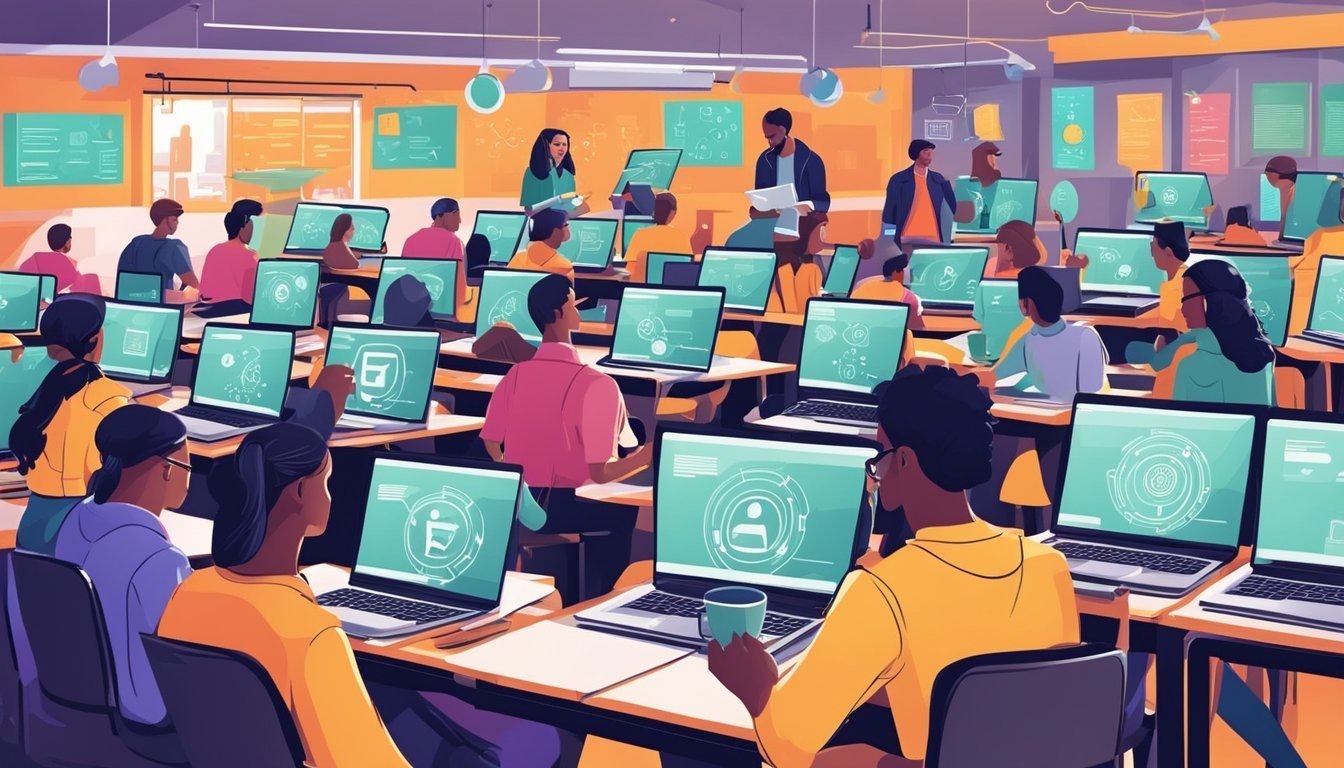California has taken a bold step forward in education.
Governor Gavin Newsom has announced a pioneering partnership between the state and a technology firm to roll out artificial intelligence (AI) courses, resources, and job opportunities across its public colleges.
Rebeca Damico’s Experience
For 21-year-old Rebeca Damico, a public relations major at the University of Utah, the 2022 launch of ChatGPT coincided with a turbulent time in her academic life.
As graduation approached, she was met with swift backlash from her professors, who quickly revised course syllabi to ban the use of the AI chatbot, branding it as plagiarism.
This sudden shift instilled a deep sense of worry in Damico.
She has always valued academic integrity, but the rise of AI tools like ChatGPT presented a daunting challenge: the temptation of rapid assignment completion versus the ethical implications of relying on such technology.
Understanding that many classmates succumbed to using AI for their essays—only to face serious repercussions—left her anxious about navigating this new landscape.
The academic world is rife with contradictions, particularly for students like her.
Professors issue stern warnings against AI usage while students feel immense pressure to learn AI skills that are increasingly essential in today’s job market.
With generative AI creating new industries and job roles, Governor Newsom’s initiative aims to equip students with crucial AI knowledge through collaborations with tech partners.
Educational Institutions Responding to AI
As universities grapple with the implications of AI, responses vary considerably.
For instance, the University of Utah has adopted a strict stance, laying down new guidelines to clarify AI tool usage.
They classify unsanctioned AI use as cheating and advise faculty to implement AI detection methods to complement existing plagiarism checks like those offered by Turnitin.
While some educators remain resolute in their AI restrictions, others are beginning to weave AI into their teaching strategies.
Different institutions approach the topic in varied ways; some, like Stanford University, outline detailed policies, while others leave it to individual professors to determine their own AI protocols.
Stanford, for instance, permits AI use for assistance but requires any interactions to be disclosed, treating them like collaborations with fellow students.
Virginia Byrne, an associate professor at Morgan State University with a focus on technology and education, highlights her institution’s push for best practices in AI integration.
She often assigns projects where students evaluate the strengths and weaknesses of different AI tools.
As a member of the TRAILS Institute, she collaborates with schools like the University of Maryland and Cornell University to investigate the ethical implications of AI usage.
Byrne emphasizes her concern that the unrealistic expectations set by AI’s perceived speed might place undue pressure on students, pushing them to project an unattainable image in networking scenarios.
Student Engagement with AI Tools
As students begin to interact more readily with AI, their experiences are starting to shift.
Shriya Boppana, a 25-year-old MBA student at Duke University, acknowledges the undeniable influence of AI.
Initially indifferent toward the technology, her viewpoint transformed after working on a project with Google, which showcased AI’s potential in everyday life.
Today, Boppana utilizes AI for a variety of tasks, such as scheduling and organizing group projects.
This regular use has allowed her to appreciate AI’s ability to handle mundane chores while also reminding her of its limitations.
Conversely, Parris Haynes, a philosophy junior at Morgan State, notes that the heavy burden of academic work may tempt students to seek out AI assistance.
Although he acknowledges AI’s utility in structuring thoughts, he’s hesitant to apply it to his philosophy studies, believing it could detract from the inherent enjoyment of grappling with complex ideas.
A cautious curiosity pervades the student body regarding AI.
Many express awareness of its potential while harboring concerns about its consequences for future job markets.
Fesinstine, the founder of peoplepower.ai and an instructor at the City University of New York, observes that students display a “cautiously curious” attitude, understanding both the ethical dilemmas and the likelihood that AI will play a significant role in many future professions.
Two years after the introduction of ChatGPT, Damico’s perspective has evolved.
Working at a public relations firm, she recognizes the efficiency and value generative AI can contribute to her tasks.
She enjoys using AI for brainstorming and content creation, all while keeping a principled stance by refraining from applying it to her academic work.
Similarly, Boppana envisions a future brimming with opportunities in the AI realm.
Excited to contribute to advancements in fields like healthcare and technology, she believes the integration of AI enhances human potential, presenting a remarkable opportunity to redefine the relationship between humanity and technology.
This conversation around AI and education continues to develop as students, educators, and industry leaders work to find common ground.
Source: The74million


